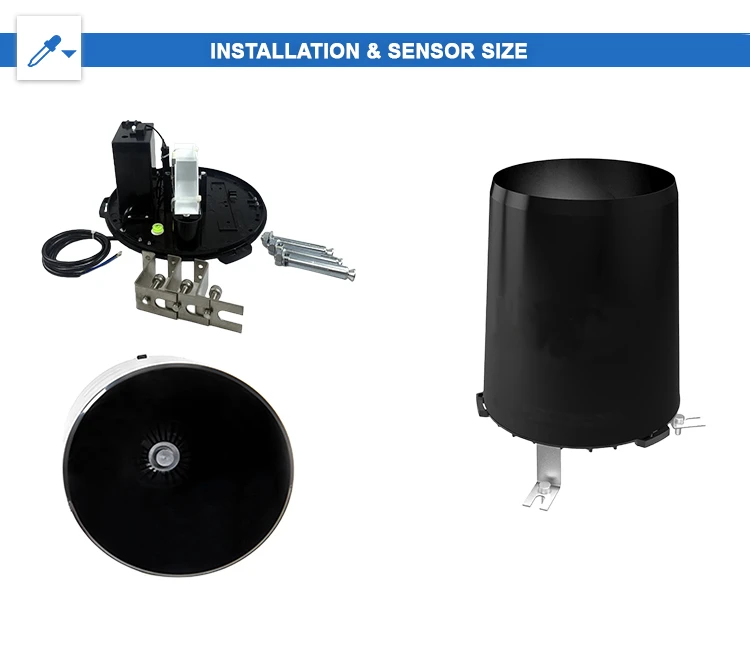How to Select the Optimal Size and Height for Your Rain Gauge
Rain gauges are essential tools for homeowners and outdoor lovers who want to track rainfall levels easily. Choosing the right size and height for your rain gauge is key for accurate and consistent measurements. This guide looks at what to think about when choosing a rain gauge. It will help you get the best use from it.
The Importance of Choosing the Right Size
The size of a rain gauge affects how well it measures rainfall. Models with larger basins can hold more water. This provides accurate readings, especially after it rains a lot.
Smaller rain gauges might not hold enough water. This can lead to mistakes in measurements. To choose the right size, think about the usual rainfall in your area. Places with a lot of heavy rain may need a larger gauge.
Size also impacts how well we can see things. Larger rain gauges are easier to see quickly. This makes it easy to track rainfall from far away.
Small rain gauges can mix in with their surroundings. This is especially true when they are in gardens or busy places. So, think carefully about where to place it. Choose a size that works well for both use and access.
Generally, opting for a larger rain gauge tends to be advantageous. It gives more accurate measurements and is often easier to see from a distance. However, consider practical things like the space you have. Pick a size that fits well in the place you chose.
Getting the Height Right
The height of a rain gauge is very important for getting accurate measurements. Placing it too close to the ground can cause wrong readings.
This happens because of splashing or debris from runoff. On the other hand, very high installations might not catch all the rainfall. This can lead to missing data.
For ease of use and accuracy, aim to place your rain gauge at eye level. This height makes it simpler to measure and keep the device. It also makes sure that rainwater collects well without any blockages.
Also, place your gauge in an open area. Keep it away from trees, buildings, or anything that could block rain or cause problems.
Putting it at the right height reduces outside noise. It also makes regular maintenance easy. A clear area at eye level usually offers the best mix of usefulness and accuracy.
Material Matters
The material of your rain gauge is an important thing to consider. Common options are plastic, glass, and metal. Each has its own pros and cons.
Plastic rain gauges are lightweight, cheap, and can handle bad weather. This makes them quite popular. However, they can get worse over time. This may cause problems like fading or cracking.
Glass rain gauges collect water clearly and look nice. However, they are fragile and not ideal for extreme weather. Metal rain gauges are strong and weather-resistant.
They are great for tough outdoor conditions. However, they are often heavier and more expensive than other materials.
When choosing a material, think about the local weather and how long it will last. Select one that can withstand exposure to natural elements while remaining easy to clean and maintain for sustained performance over time.
Placement Matters Most
Proper positioning of a rain gauge is vital for accurate rainfall measurement. To ensure precise readings, keep the following points in mind:
– Opt for an open space free of obstructions. Position your rain gauge in an area where rainwater can collect uninhibited by trees, buildings, or other barriers.
– Place the rain gauge on a flat and level surface to guarantee even water collection. Avoid sloped or uneven ground, as this may compromise measurement accuracy.
– Ensure the rain gauge is conveniently accessible for regular readings and maintenance. A placement at eye level is ideal for ease of use and visibility.
– Routinely inspect and clean your rain gauge to maintain accuracy. Clear away debris or blockages that might disrupt water collection.
By following these placement guidelines, you can trust your rain gauge to provide accurate rainfall data. Good positioning is key for effective rainfall monitoring.
Maintaining Accuracy Through Care
Regular maintenance is important to keep your rain gauge accurate and working well. Here are some tips to keep it in great shape:
– Clean your rain gauge often. This will help get rid of dirt, debris, or residues that can affect how it works. Use mild soap or detergent with warm water. Clean both the inside and outside.
– Check your rain gauge for cracks, leaks, or any damage you can see. Quickly fix or replace it as needed to make sure measurements are reliable.
– Periodically check its calibration. Compare readings with a professional weather station to confirm precision.
– Keep the device in a safe place when you are not using it. Keep it safe and dry to protect it from bad weather.
By following these steps, you can help your rain gauge last longer. This will help you get correct results as time goes on. Taking care of your device helps you use it better and track rainfall easily.
Final Thoughts
Choosing the size and height of your rain gauge is important. Where you put it and how you take care of it also matter. These factors have a big impact on how well it measures rainfall.
By looking at the factors mentioned above, like location, surface level, materials, and care, you will make a smart choice. This choice will help make sure performance is reliable. Get the right rain gauge today. This will help you track rainfall levels and learn useful information for years!
